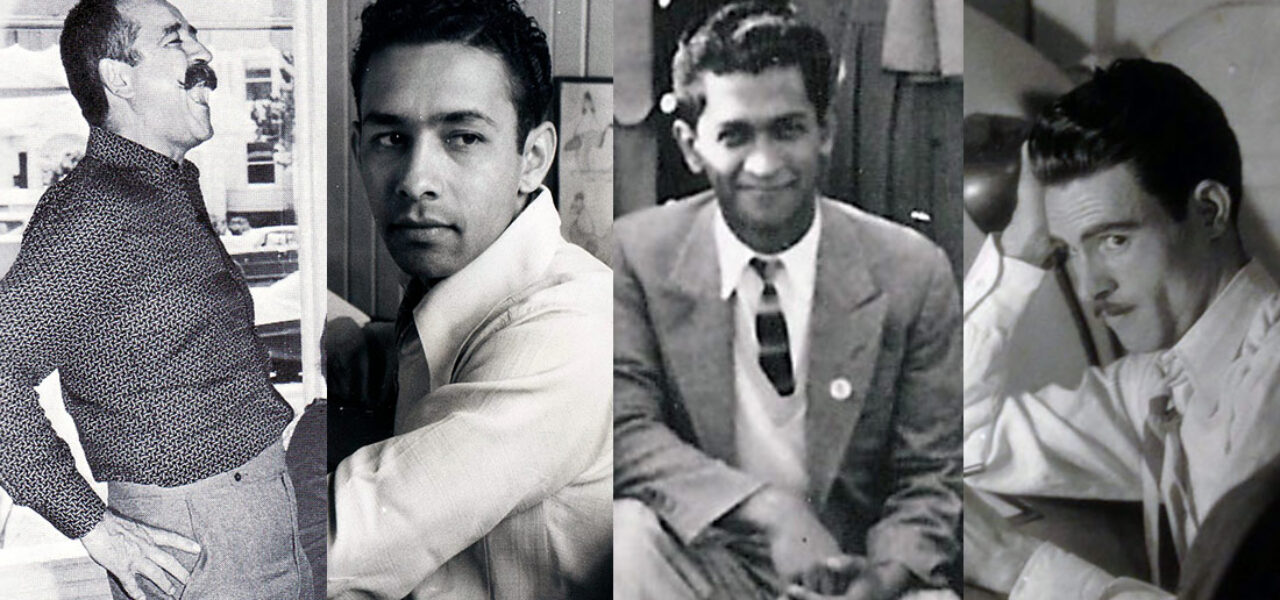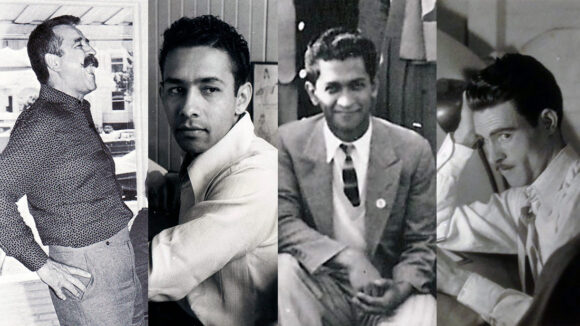

A Celebration Of The Mexican Artists Who Helped Create The American Animation Industry
Hispanic Heritage Month wrapped up a few days ago, but it’s never too late to acknowledge the immense contributions that Mexican and Mexican-American artists have made to the development of American animation.
When you start diving into American animation history, it’s actually surprising at first to discover the impact that artists of Mexican descent have had on the U.S. industry. Whereas Black artists were largely denied a place in the industry until the mid-1950s, Mexican artists entered the business in the 1920s. By the 1930s, they were working at all of the major studios, holding key roles at many of them. The first characters created by a Mexican-American artist were Manuel Mario Moreno’s Meany, Miny, Moe, a trio of monkeys who started appearing in a Universal theatrical series in 1935.
By the 1950s, some of the artists moved back south and helped jumpstart the industry across the border, imparting their knowledge of U.S. studio production to a new generation of artists in Mexico. Others, like Bill Melendez and Phil Roman, would go on to start successful studios in the United States.
Below is a look at just a few of the Mexican artists who have made important contributions to American animation history. Keep in mind, these capsule bios barely scratch the surface of their life and careers, which deserve much deeper research and acknowledgement.
Carlos Manriquez (1908-1981) joined the Disney studio in 1929. He was employee #42, and became the studio’s first full-time background painter, according to colleague Wilfred Jackson. Manriquez left the studio in 1938. It’s unclear what he did immediately afterward, but he pops up again in 1951 as a background painter at Warner Bros. He later moved to Mexico City, where he worked on Rocky and Bullwinkle at Val-Mar Productions. At Val-Mar, Manriquez headed up the background department and also supervised the checking, ink-and-paint, and camera departments. Manriquez later started his own studio in Mexico.

José Cuauhtémoc Melendez (1916-2008), who went by Bill, is probably the most famous Mexican-American artist who worked during the Golden Age of Hollywood animation, and for good reason. He had a tremendous knack for being present at the exact moment of every studio’s glory period. He was an assistant animator at Disney on Pinocchio and Fantasia; an animator at Warner Bros. in Bob Clampett’s unit on The Great Piggy Bank Robbery, Baby Bottleneck, and Book Revue; and at UPA on Gerald McBoing Boing, Trouble Indemnity, Christopher Crumpet, and Madeline. In the mid-1950s, Melendez transitioned to directing at the commercial studio Playhouse Pictures. He was nearly fifty years old when he directed A Charlie Brown Christmas, the tv special that would set him up for the remainder of his career. After 1965, Melendez’s own studio became the exclusive provider of Peanuts animation for specials and features well into the 1990s.

Gus Arriola (1917-2008) started his career at the Mintz Studio, before moving over to MGM and the Army Air Force’s First Motion Picture Unit, but animation was merely the opening act for what would become his greatest contribution to cartooning: the newspaper comic Gordo, which Peanuts creator Charles Schulz once called, “probably the most beautifully drawn strip in the history of the business.” The strip introduced Americans to Mexican culture and helped popularize Spanish words and phrases like “hasta la vista,” “amigo,” “piñata,” “muchacho” and “hasta mañana.” While Arriola’s animation career was limited to just a half-decade or so, his animation training and knack for expressive design and appealing poses followed into his comic career and resulted in a pioneering comic strip rooted in Mexican culture.

Rudy Larriva (1916-2010) was a respected animator for decades in Hollywood. He first made his mark at Warner Bros. in the late 1930s where “Chuck Jones considered Rudy to have been his top animator in the late ’30’s and early ’40’s,” according to animator and historian Greg Duffell. “Chuck counted on Rudy a lot in the Sniffles/Elmer’s Pet Rabbit days to deliver top quality Disney style animation, even though Larriva would have been very young at the time.” Larriva later went to Disney where he animated on Song of the South, Make Mine Music, and Melody Time, before becoming a key animator at UPA, where he worked on the first Mister Magoo short Ragtime Bear, as well as Gerald McBoing Boing and A Unicorn in the Garden. From the 1960s onward, Larriva spent much of his time as an animation director, working at all the major studios of the era: Hanna-Barbera, Filmation, and Ruby-Spears. Notably, he was a director on both the original animated incarnation of Alvin & The Chipmunks, The Alvin Show, in 1961, as well as the Ruby-Spears reboot in 1983.

Phil Roman, who turns 91 years old in December, was born in Fresno, California, the son of migrant farm workers from Mexico. He rose to become the owner of one of the largest independent U.S. animation studios of the Eighties and Nineties: Film Roman Inc. If his company’s name isn’t familiar, the iconic shows they produced certainly are: The Simpsons, King of the Hill, Family Guy, Garfield and Friends, Bobby’s World, and The Critic, to name but a few. Roman started his career at Disney in the 1950s, before becoming a key animator for Chuck Jones in the 1960s, working on Tom & Jerry shorts at MGM, as well as the classic holiday special How the Grinch Stole Christmas!, the Oscar-winning short The Dot and the Line, and other Jones projects like Horton Hears a Who! and The Phantom Tollbooth. Roman started directing Peanuts specials for Bill Melendez in the 1970s, and in the 1982 he directed the first Garfield animated special. The success of Garfield led him to launch his own studio a few years later, at age 53. Roman continued running Film Roman until he left the company in the late 1990s. The studio today is owned by Starz.

While we’ve established that there have been a lot of animators of Mexican descent in the business, there are far fewer who worked in the story department. Ernesto “Ernie” Terrazas (1909-1995) was a notable exception. At Disney, he transferred from assistant animation to the story department sometime in the late 1930s. During the production of the studio’s Latin American projects, Terrazas’s knowledge of Mexican culture proved particularly valuable. His biggest contribution was developing the Mexican star of The Three Caballeros: the charro rooster, Panchito. Details about his later animation career are spotty: in the 1950s, he wrote a series of anti-communist propaganda cartoons for Mexican audiences, which were discreetly funded by the U.S. government; in the early-1960s, he directed Rocky & Bullwinkle tv cartoons at Val-Mar Productions in Mexico City; and beginning in the 1970s he was a story director at Hanna-Barbera on projects like Yogi’s Gang, The New Scooby-Doo Movies, and The Kwicky Koala Show.

Besides the above names, many other Mexican and Mexican-American artists have made key contributions to the animation industry. Here are a few more important names to know:






.png)